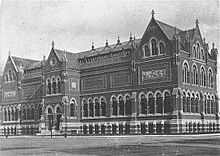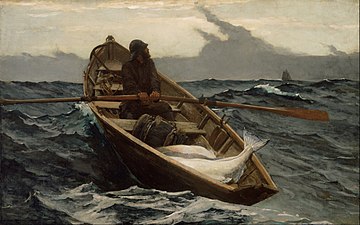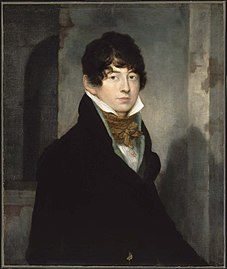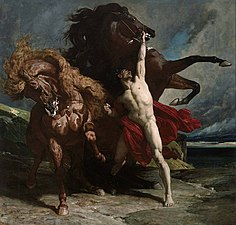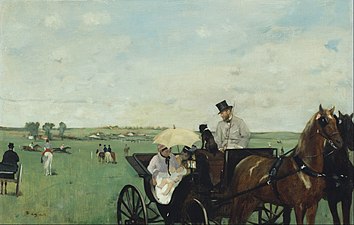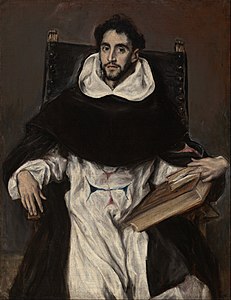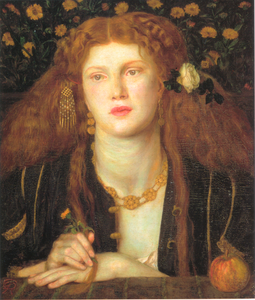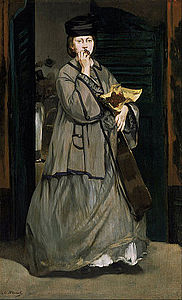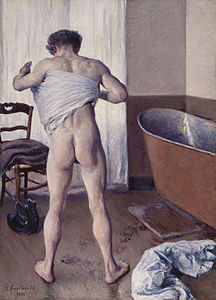
An art museum or art gallery is a building or space for the display of art, usually from the museum's own collection. It might be in public or private ownership, be accessible to all, or have restrictions in place. Although primarily concerned with visual art, art museums are often used as a venue for other cultural exchanges and artistic activities, such as lectures, jewelry, performance arts, music concerts, or poetry readings. Art museums also frequently host themed temporary exhibitions, which often include items on loan from other collections.

The Isabella Stewart Gardner Museum is an art museum in Boston, Massachusetts, which houses significant examples of European, Asian, and American art. Its collection includes paintings, sculpture, tapestries, and decorative arts. It was founded by Isabella Stewart Gardner, whose will called for her art collection to be permanently exhibited "for the education and enjoyment of the public forever."

The School of the Museum of Fine Arts at Tufts University is the art school of Tufts University, a private research university in Boston, Massachusetts. It offers undergraduate and graduate degrees dedicated to the visual arts.

The Peabody Essex Museum (PEM) in Salem, Massachusetts, US, is a successor to the East India Marine Society, established in 1799. It combines the collections of the former Peabody Museum of Salem and the Essex Institute. PEM is one of the oldest continuously operating museums in the United States and holds one of the major collections of Asian art in the United States. Its total holdings include about 1.3 million pieces, as well as twenty-two historic buildings.

The Carnegie Museum of Art is an art museum in the Oakland neighborhood of Pittsburgh, Pennsylvania. The museum was originally known as the Department of Fine Arts, Carnegie Institute and was formerly located at what is now the Main Branch of the Carnegie Library of Pittsburgh. The museum's first gallery was opened for public use on November 5, 1895. Over the years, the gallery vastly increased in size, with a new building on Forbes Avenue built in 1907. In 1963, the name was officially changed to Museum of Art, Carnegie Institute. The size of the gallery has tripled over time, and it was officially renamed in 1986 to "Carnegie Museum of Art" to indicate it clearly as one of the four Carnegie Museums.

The Portland Art Museum (PAM) is an art museum in downtown Portland, Oregon, United States. The Portland Art Museum has 240,000 square feet, with more than 112,000 square feet of gallery space. The museum’s permanent collection has over 42,000 works of art. PAM features a center for Native American art, a center for Northwest art, a center for modern and contemporary art, permanent exhibitions of Asian art, and an outdoor public sculpture garden. The Northwest Film Center is also a component of Portland Art Museum.

The Minneapolis Institute of Art (Mia) is an arts museum located in Minneapolis, Minnesota, United States. Home to more than 90,000 works of art representing 5,000 years of world history, Mia is one of the largest art museums in the United States. Its permanent collection spans about 20,000 years and represents the world's diverse cultures across six continents. The museum has seven curatorial areas: Arts of Africa & the Americas; Contemporary Art; Decorative Arts, Textiles & Sculpture; Asian Art; Paintings; Photography and New Media; and Prints and Drawings.
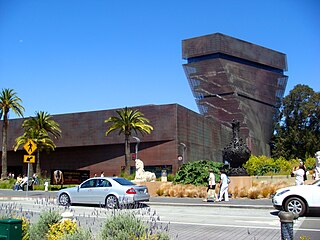
The de Young Museum, formally the M. H. de Young Memorial Museum, is a fine arts museum located in San Francisco, California. Located in Golden Gate Park, it is a component of the Fine Arts Museums of San Francisco, along with the Legion of Honor. The de Young is named for early San Francisco newspaperman M. H. de Young.

The Virginia Museum of Fine Arts (VMFA) is an art museum in Richmond, Virginia, United States, which opened in 1936. The museum is owned and operated by the Commonwealth of Virginia. Private donations, endowments, and funds are used for the support of specific programs and all acquisition of artwork, as well as additional general support.
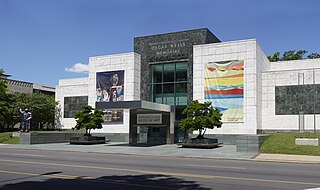
The Birmingham Museum of Art is a museum in Birmingham, Alabama. Its collection includes more than 24,000 paintings, sculptures, prints, drawings, and decorative arts representing various cultures, including Asian, European, American, African, Pre-Columbian, and Native American. The museum is also home to some Renaissance and Baroque paintings, sculptures,and decorative arts from the late 13th century to c. 1750.

The Museum of Fine Arts, Houston (MFAH), is an art museum located in the Houston Museum District of Houston, Texas. With the recent completion of an eight-year campus redevelopment project, including the opening of the Nancy and Rich Kinder Building in 2020, it is the 12th largest art museum in the world based on square feet of gallery space. The permanent collection of the museum spans more than 6,000 years of history with approximately 70,000 works from six continents. In 2023, the museum received over 900,000 visitors, making it the 20th most-visited museum in the United States.

The DeCordova Sculpture Park and Museum is a sculpture park and contemporary art museum on the southern shore of Flint's Pond in Lincoln, Massachusetts, 20 miles northwest of Boston. It was established in 1950, and is the largest park of its kind in New England, encompassing 30 acres.

The Nagoya/Boston Museum of Fine Arts (N/BMFA) was an art museum in Nagoya, Japan, that operated from 1999 to 2018.
Malcolm Austin Rogers, CBE is a British art historian and museum administrator who served as the inaugural Ann and Graham Gund Director of the Museum of Fine Arts, Boston, Massachusetts, from 1994 through 2015, the longest serving director in the institution's 150-year history. In this role, Rogers raised the status of the museum locally, nationally, and internationally, and brought both extensive popularity and occasional controversy to the museum.

The Montgomery Museum of Fine Arts is a museum located in Montgomery, Alabama, USA, featuring several art collections. The permanent collection includes examples of 19th- and 20th-century American paintings and sculpture, Southern regional art, Old Master prints and decorative arts. It is also home to Artworks, a participatory art gallery and studio for children.
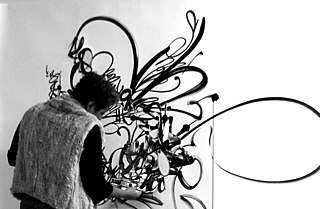
Shinique Smith is an American visual artist, known for her colorful installation art and paintings that incorporate found textiles and collage materials. She is based in Los Angeles, California.

Bacchante and Infant Faun is a bronze sculpture modeled by American artist Frederick William MacMonnies in Paris in 1893–1894.

Samuel Burtis Baker, commonly known as Burt Baker, was an American artist and teacher, best known for his portrait paintings.

Julia Csekö is an Artist, Educator and Independent Curator having worked at multiple learning, non-profits, and cultural organizations, including Montserrat College of Art, and the Museum of Fine Arts, Boston.

Noma Copley was an American fine arts jeweler and art collector noted for her contributions to Surrealist practices and activities. From 1953 through 1968, she was married to William Copley and, with him, helped to acquire one of the largest collections of Surrealist paintings and sculpture in America. In 1954, they established the William and Noma Copley Foundation, a non-profit organization dedicated to fostering the creative arts. According to a 1975 article in New York Magazine, she "emerged from the Paris world of surrealist painters five years ago to become one of New York's most original jewelry designers."





